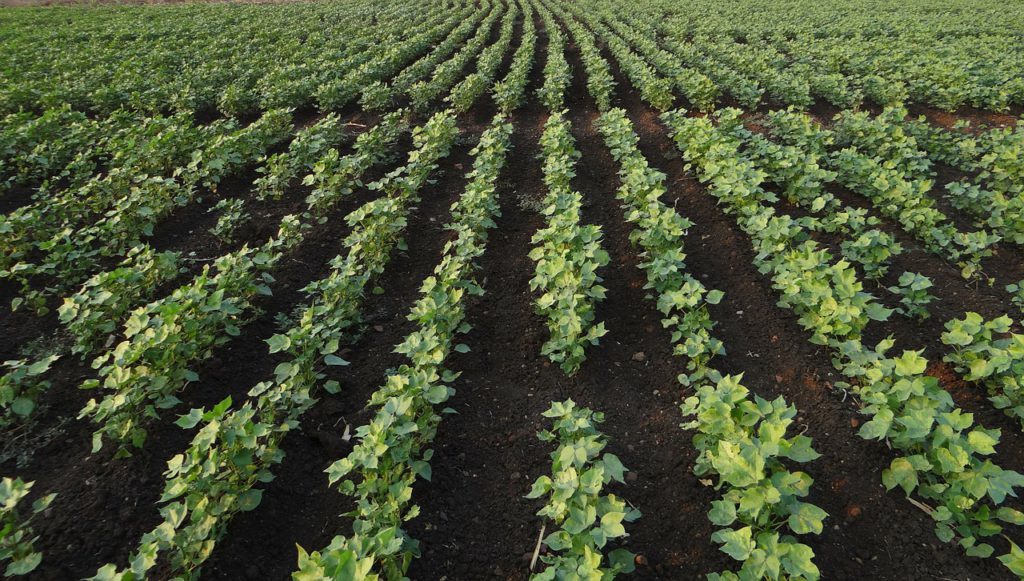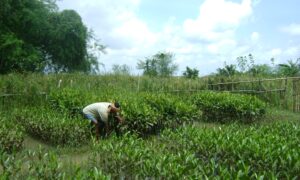India’s transgenic crops fact sheet

In 2015, India not only produced more cotton but narrowed yield gap with China and USA.
 New Delhi (Big Wire) – Bt cotton technology coupled with hybridization has made India the number one cotton producer in the world. India’s cotton production tripled during the last fourteen years from 13 million bales in 2001/02 to 39 million bales in 2014/15.
New Delhi (Big Wire) – Bt cotton technology coupled with hybridization has made India the number one cotton producer in the world. India’s cotton production tripled during the last fourteen years from 13 million bales in 2001/02 to 39 million bales in 2014/15.
– Bt cotton technology and Indian cotton farmer achieved this milestone by displacing China and USA to second and third position respectively. Around 7.7 million cotton farmers adopted Bt cotton. They doubled yields and production both in irrigated, semi-irrigated and dry-land areas.
You may like to read
India’s cotton boom hope hinges on monsoon bounty
– In 2015, India not only produced more cotton but narrowed yield gap with China and USA.
– Every fourth textile/garment items (shirts or trousers) manufactured anywhere in the world contain cotton produced in India. India has emerged as a major exporter cotton in the world market.
– Indian cotton farmers adopted Bt cotton at a pace faster than their counterparts in industrial countries such as the USA. In 2015, farmers planted a record 11.6 million hectares of Bt cotton, equivalent to a high adoption rate of 95 percent of the total cotton area in the country.
– It is estimated that around 7.7 million Bt cotton farmers have become richer by US $18.3 billion in the thirteen year period 2002 to 2014 and US $1.6 billion in 2015 alone.
– To remain competitive, Indian farmers deserve access to advanced cotton technologies to overcome challenges including leaf curl virus in Northern India and effective control of pink bollworm in Central and Southern growing belts.
– There is a direct correlation between technology and productivity. India’s cotton story is an example of technology-driven productivity enhancement. Any reversal of technology will directly impact cotton production and productivity.
– The future of cotton farming lies in acceptance of new tools and technologies in the cotton sector including approval of new generation stacked Bt/Ht cotton, development of erect type cotton genotype for high-density planting, the popularization of high-density planting, mechanization of cotton picking and harvesting.
– Lately, there is a visible sign of rising food import and increasing the dependence of imported food to ensure food security including rising import of edible oil, pulses, and corn.
– To accelerate food production of pulses, edible oil crops, and cereals, India should look out for technological solutions, both home-made and globally tested, and seriously consider approval of three important biotech crops, which are ready to be commercialized that would trigger a new phase of growth and momentum for agriculture sector: –
i) Approval of country’s first biotech mustard (Brassica juncea) with ii) Approval of the country’s first stacked trait – the insect resistant and iii) Approval of country’s first vegetable crop Bt brinjal (eggplant) by enhanced heterosis (hybridization) in mustard, the most important edible oil crop in India; herbicide tolerant cotton, Bollgard II Roundup Ready Flex cotton (BG-II RRF™); revisiting its 5 years old moratorium.
(Source: South Asia Biotechnology Centre)
(Big Wire New Delhi Bureau)












































